[Here is Leon Degrelle’s introduction to his “Revolutionary Life” where he describes the sacrifices made by those like him who joined the Waffen SS to fight the evil of jewish communism in WW II. Although those sacrifices were not in vain, as they prevented the whole of Europe from being dominated by communism directly, his kind have remained pariahs and their story muzzled by the cause and victors of that war; organized jewry — KATANA.]
Leon Degrelle’s
My Revolutionary Life
Muzzling the Vanquished
An Introduction to
“My Revolutionary Life”
By
John Nugent
THE BARNES REVIEW is delighted and proud to announce the return to our pages of Gen. Leon Degrelle of Belgium after a one-year hiatus that seemed 12 months too long for many of our readers. After 10 years of le général’s piercing historical and military insights about prewar Europe and World War II, we have discovered in these pages another side of Degrelle, equally fascinating but very personal: the human who, like all great leaders, hid his suffering while the almost “superhuman” leader, warrior and, later, unbowed leader in exile was out inspiring others. We meet a leather-tough visionary who experienced tragedies and triumphs like all mortals. But his were the great events of history, and he was the unique Leon Degrelle.
This author of now 55 articles in THE BARNES REVIEW was in fact the last surviving World War II leader. Unlike ivory-tower historians who toe the establishment’s official line, Degrelle writes and speaks from personal encounters, discussions and hard questioning. He grilled Winston Churchill while dining with him at the House of Parliament restaurant. (Churchill confessed that were he a German he himself would be for Hitler.) Degrelle discussed war strategy and the escape of the English at Dunkirk with Hitler, who admired the forthright and dynamic Degrelle greatly. As one military commander to another, he met with Spain’s nationalist leader Francisco Franco, who later rescued him from violent postwar leftists. And he debated a Benito Mussolini whose strengths and weaknesses young Degrelle quickly penetrated.
A brilliant student of law, political science, religion, archeology, art and philosophy, at 26 Degrelle used his mind and heart to found the Rexist Party to end the ruthless rule of Belgium’s plutocrats and create a “national community” inspired by national and Christian values. By age 29 he was the biggest vote getter in the Belgian Parliament, getting 36 Rexist deputies elected with his spellbinding writing, oratory and superhuman energy.
My Revolutionary Life will explain how this private man from a small French-speaking village could become the fiery political leader who turned Belgium upside down. It makes clear how a brilliant intellectual could thereafter switch from speeches to action when the war came, founding his own regiment of elite Waffen-SS infantry on the dreaded Eastern Front. There, the one-time wordsmith rose quickly from private to a supremely honored and decorated colonel through hand-to-hand combat and military leadership on the alternately fiery or freezing Russian Front. Degrelle the warrior was also Degrelle the mourner: of the 800 men in his regiment fighting the Red steamroller, only he and two comrades survived.
Image: A joyful Degrelle on leave from the Russian campaign. He is shown with the four youngest of his eight children and his devoted wife Jeanne. After the war, Degrelle’s children were forcibly taken from him and his wife and spread across Germany. He later managed to find them all, and Degrelle reunited the family in Spain under the protection of Francisco Franco.
We present here Leon Degrelle (1906-1994) dealing with successes, enduring persecutions and slander, and finding the humor and inner fire to continue slaying his hypocritical foes with the word and the pen while inspiring the next generations of militants for the West.
The following is Chapter One of Leon Degrelle’s My Revolutionary Life. . . .
Cover: Leon Degrelle, always the visionary, gazes over the Bay of Malaga, Spain, always the visionary. This photo was taken in the 1990s when Degrelle was in his 80s and writing My Revolutionary Life.
_____________
My Revolutionary Life
CHAPTER ONE
For those of us who escaped in 1945 from the Eastern Front’s final hell, torn up by wounds, overcome by sorrows, devoured by pain, what rights do we still have? We are dead men. Dead men with legs, arms, and breath—but dead.
To pronounce a word of truth in public or write a dozen lines without lies after having fought pistol in hand against the Soviet machine—above all, to have been a leader called “fascist”—this is immediately seen by the “democrats” as a “provocation.”
For a criminal with normal rights, it is always possible to explain away and justify oneself. Has he killed his father? His mother? Bankers? Neighbors? Has he since then gone back to a life of crime? Then newspapers of the world press will open their columns to his “memoirs”; they will publish the tale of his crimes under bombastic headlines, decorated with a thousand gaudy and gory details. It matters not whether the subject is an infamous cut-throat or one of his ten eager imitators.
A clinical description in America of the most vulgar murderer went through multiple print runs and made millions of dollars—a bestseller for its obsessively nitpicking analyst, Truman Capote. [1]
Other killers at large such as the late “Bonnie and Clyde” are apotheosized in films and even dictate new fashions in upper-crust malls.
As for those condemned for political reasons, now that depends. It is the color of their political banner that determines their justification or execration.
A campesino, a country bumpkin who became the leader of a band in the extreme-leftist Frente Popular in 1930s Spain, one whose scruples never prevented him from machine-gunning patriotic Nacionalistas, has been able—in the very same Spain where he murdered his compatriots—to explain freely and at length, in hundreds of thousands of copies of the highest circulation newspaper in Madrid, all his bloody adventures as a Spaniard of the left.
But we must remember — he was of the left. He had the right to kill and then to brag about his killing.
In fact, on the left you have all the rights.
Whatever have been the crimes — yes, the mass exterminations — in which every Marxist regime indulges, no one will even look askance at the individual Marxist killer. The conservative right will not because it inanely prides itself on being “open to dialogue” with sworn enemies. The left will not because it always stands by all its cherished henchmen.
A revolutionary agitator, communist guerrilla and Castro confidant the likes of Regis Debray [2] can count on sympathizing audiences everywhere. One hundred bourgeois newspapers will excitedly rush out with his newest ideas. The Pope and Gen. De Gaulle rush to protect him, and plead that he not be executed in the country he tried overthrowing, one under his tiara, the other under a general’s hat.
How can one avoid the contrast with fate of Robert Brasillach, the greatest writer France produced during the war years? Passionate about his country, to which he had dedicated his life and his work, “la Libération” of ’44 meant the poet was pitilessly eliminated (on February 6, 1945). No officer’s hat was seen in his defense, but a braided hat surely nodded the signal to the firing squad that gunned this writer down.
[Add. image —French writer and journalist Robert Brasillach, on the left, posing next to Jacques Doriot, in the middle, on the Eastern front about 1943. Robert Brasillach was the chief editor of the newspaper Je Suis Partout, a pro-German publication.]
________________
Waffen-SS General Leon Degrelle: A Life in the Crucible
Leon Degrelle was among the most indomitable leaders of the 20th century. Some have called him “fearless.” But Adolf Hitler, attending a speech by Josef Goebbels, once corrected the notion that a true fighter can be “fearless.” Goebbels, carried away by his own oratory, had rhapsodized that “the German soldier is fearless.”
Hitler scoffed:
“My dear Goebbels, one can see from this that you have never been at the front. No one who has seen its carnage is fearless. All one can do is overcome the fear.”
This call to overcome fear was heeded a lifetime long by a Belgian village boy who faced poverty, political ostracism, the knocking-out of ten of his teeth and the bayoneting of 21 supporters by order of Jewish Interior Minister of France Georges Mandel, four years on the Eastern Front, a plane crash in Spain, the seizure of his seven girls and little son by the post-war Belgian government, pursuit by Israeli hit squads and,finally, a bounty on his aged head by Simon Wiesenthal.
[Add. image — Escaping from the Allies, Degrelle made an emergency landing of his Heinkel 111 on the Beach of La Concha in San Sebastian, Spain in May, 1945.]
Nothing could have been worse for the devout Christian and family man Degrelle than the kidnapping by the post-war Belgian government of his offspring, who were scattered to eight different foster homes, given entirely new names and prevented from seeing each other or their parents. Finally, through fiercely devoted friends, Degrelle was able to restore all eight to his hearth. Overcoming every fear possible, Degrelle entered Valhalla in 1994 as a legend in the history of the West.
________________
The rank anarchist Daniel Cohn-Bendit [3] — born in Germany but who agitates equally in France—is barely sought by the French police. Ipso facto the police never find him, even when he is getting ready to blow the whole country sky-high.
[Add. image — Daniel Marc Cohn-Bendit (born 4 April 1945) is a Jewish-French-German politician. He was a student leader during the unrest of May 1968 in France and was also known during that time as Dany le Rouge (French for “Danny the Red“, because of both his politics and the colour of his hair).]
As much as he wanted and the way he wanted it, he was able to publish his rantings—as incendiary as they were mediocre — via capitalist publishing firms. He must have snickered as he pocketed the fat royalty checks handed him by those he would destroy.
The Soviets established their dictatorship on the bones of 16.5 million murdered. But mentioning this martyrdom en masse in polite society is just not done. . .
Nikita Khrushchev, commissar of the lethal Ukrainian famine, a vulgar hog-market mountebank, he of the big chickpea-mole on a peasant nose, a sweaty man, dressed like a ragbag, why shouldn’t he have clumped triumphantly around the United States, his granny on his arm, escorted by U.S. Cabinet officials and fawning billionaires, and by French “can-can” dancers and the flower of the Kennedy clan? Nikita even permitted himself to bang on the table with his sweaty shoe during a General Assembly of the United Nations without the bouncers being called.
[Add. image — Nikita Khrushchev’s shoe-banging incident occurred during the 902nd Plenary Meeting of the United Nations General Assembly held in New York in 1960. During the session on 12 October, Khrushchev pounded his shoe on his delegate-desk in protest at a speech by Philippine delegate Lorenzo Sumulong.
In 2003, American scholar William Taubman reported that he had interviewed some eyewitnesses who said that Khrushchev had brandished his shoe but not banged it. He also reported that no photographic or video records of the shoe-banging had been found. However, in his biography of Khrushchev, he wrote that he accepted that the shoe-banging had occurred. There is at least one fake photograph, where a shoe was added into an existing photograph (shown above).
Source: https://en.wikipedia.org/wiki/Shoe-banging_incident]
In the same vein, Bolshevik vice premier Alexei Kosygin bowed his august, badly cooked potato-head to receive laurel wreaths from the French. The French were still fainting like ladies over the stories of Auschwitz—but entirely amnesiac about some thousands of Polish officers at Katyn. These officers had merely served in 1940 in the army of a French ally; they were merely the elite of Polish society—and the USSR shot them down like dogs.
Image: Antonio de Velazquez’s famous painting entitled The Surrender of Breda. Degrelle had most certainly seen this painting at the Prado Museum in Madrid, and it made a lasting impression. It depicts the moment in 1625 when Spanish General Ambrosio de Spinola accepted the surrender of the Dutch commander of Breda, Justin von Nassau. Although an intercepted message from the Dutch had divulged to the Spanish that the defenders of Breda were running out of food and ammunition, the munificent de Spinola still offered compassionate surrender terms and spared the city from sacking and burning, which was the norm. The chivalrous behavior demonstrated by the Spanish at Breda was in stark contrast to the treatment the vanquished received after World War II and which Degrelle grieves over in My Revolutionary Life.
Stalin himself, the most monstrous killer of the 20th century, an implacable tyrant, massacring dementedly for decades his people, his colleagues, his officers, and his family members, he had to be the one to receive a glistening sword of gold from the most conservative of monarchs, the king of England. His Majesty the King had no concept of how macabre was his gift choice for such a criminal.
[Add. image — Marshall Joseph Stalin being presented with the “Sword of Stalingrad“. General Voroshilov, Anthony Eden, British Prime Minister Winston Churchill, General Sir Hastings Ismay, Sir Alexander Kadogen and Sir Archibald Clark Kerr stand around the table. Churchill shakes hands with Marshall Joseph Stalin and presents the sword. Location: Tehran, Iran. Date: December 1943. It is now displayed in the Russian Embassy in Tehran.]
[Add. image — The Sword of Stalingrad. The blade is etched on one side with, “To the steel hearted citizen of Stalingrad — the gift of King George VI — in token of homage of the British people”. The reverse side of the blade bears the same text in Russian.]
But if we, the surviving fascists of World War II, have the extreme impertinence to open our mouths for just one instant, then in the very next instant thousands of “true democrats” begin frantically shrieking and baying—petrifying our own friends, who fervently implore us to “watch what you say!”
Watch what we say about what?
Is the Soviet cause now so venerable?
For 44 years [as of 1989, when this was written — Ed.] the world has been a spectator afforded numerous chances to realize the depths of Bolshevik evil. The world saw the tragedies of East Germany in 1953 and of Hungary in 1956, both crushed under Soviet tanks to expiate the crime of a reawakening taste for liberty.
[Add. image — Hungarain uprising, 1956 is put down when Soviet tanks move in.]
In 1968 the “world community” witnessed how Czechoslovakia was ground underfoot and muzzled like an animal by hundreds of thousands of communist invaders. That nation had fallen victim to an appalling naiveté: dreaming it could wriggle unnoticed out of the galley-slave’s neck irons that Moscow had forced over its head.
This world could not plead ignorance to the sighs of the many peoples oppressed by the USSR from the Gulf of Finland to the shores of the Black Sea. These agonies demonstrate clearly what horror not one but both halves of Europe would have suffered had Stalin been able to hurl his tanks past Berlin and all the way to the docks of Brittany and the Rock of Gibraltar.
[Add. image — German infantry, caught in the ruins of Stalingrad, Sept 1942.]
From the hell that was Stalingrad in November 1942 to the hell that was Berlin in April 1945, 900 days of horror and dread would pass. It was an ever more desperate struggle with an ever more horrible suffering, and its cost was the young lives of thousands who had resolved, of their own free will, that someone must go to the front.
[Add. image — May 9, 1945. Russian commanders address their troops at the Brandenburg Gate, Berlin.]
Someone must volunteer to be crushed, ground literally into the mud by Red tanks, sacrificing all to contain or to slow the Red army despite the terrifying odds, to halt a flood that surged from the Volga River and was racing toward Western Europe.
In 1940 just a week elapsed between the time the German Wehrmacht erupted over the French frontier near Sedan and the time it reached victoriously the English Channel.
What would have happened if the European fighters on the German Eastern Front—among whom were 400,000 non-German volunteers from 28 countries—had retreated as frantically as the Belgians and French? And if they had not offered, inch by inch, through three long years of brutal combat, a veritably superhuman resistance to the tide of Bolshevism?
[Add. image — Painting: Voljov 1941 by Augusto Ferrer-Dalmau. The Spanish Blue Division fighting in the Eastern Front.]
I will tell you: All of Europe would have been swamped without possibility of rescue by the end of the year 1943 or the beginning of 1944, before Gen. Dwight Eisenhower had ever run a tank over his first apple tree in Normandy.
[Add. image — A German soldier with his arm (foreground) blown off.]
Forty-four years have now elapsed. All the European countries the Soviets conquered—Estonia, Lithuania, Latvia, Poland, East Germany, Czechoslovakia, Hungary, Rumania and Bulgaria —have remained under their pitiless domination.
The smallest uprising occurs in East Berlin, Budapest or Prague, and the motorized brass knuckles arrive. Russian tanks blast down the dreamers at point blank range. Starting in July 1945, the Western Allies, having bet so imprudently on “cooperation” with Stalin, began ever so slowly to be disenchanted.
The first sign was when Churchill muttered to Truman under his breath at Potsdam — as they were leaving a meeting with Stalin, the real victor of World War II:
“We stuck the wrong pig.”
What pathetic and tardy regrets: “We stuck the wrong pig!”
Yes, Winston, for your previously “good pig” now bestrode like a giant dragon both Europe and Asia, fire-breathing his glee, the dragon’s tail at Vladivostok and the snout 120 miles from the borders of France.
The snout is still there, 44 years later, more menacing than ever, to the point that in our time no one dares even to address it except by bowing and scraping first.
The day after the 1968 crushing of Prague, the Johnsons, the De Gaulles and the Chancellor Kiesingers of this base world restricted themselves to mere protests, platitudes and timid regrets.
Meanwhile, half of Europe suffocated under the huge paunch of the Pig.
Does all this not suffice to justify our combat against Bolshevism?
Is it just — is it decent — that those who foresaw the danger clearly — those who from 1941-45 blocked the gory path of Soviet tanks by hurling in sacrifice all their youth, the tender ties to their families, their young energies, and their desires — that they are treated as pariahs unto the day of their death and even beyond the grave?
Yes, pariahs whose lips are nailed together from the moment they try to explain to those who hound them; “we too were just like you. …”
_________________
BELGIAN WAFFEN SS GEN. LEON DEGRELLE was an individual of exceptional intellect, dedicated to Western Culture. He fought not only for his country but for the survival of Christian Europe, preventing the continent from being inundated by Stalin’s savage hordes. What Degrelle has to say, as an eyewitness to some of the key events in the history of the 20th century, is vastly important within the historical and factual context of his time and has great relevance to the continuing struggle today for the survival of civilization as we know it.
In the next issue of THE BARNES REVIEW, Degrelle describes the fascist countries—Portugal, Spain, Germany and Italy—and Hitler’s disastrous and unrequited affection for a “jealous,” a “theatrical” Mussolini. This latest series of the valuable works of Gen. Degrelle has been translated and will be archived by JOHN NUGENT, a longtime European-American rights activist, former Marine machine-gunner and writer.
_________________
For before we volunteered, we too had happy lives, houses with comforts, children who cherished us, and things we owned that made life easier …
We too were once young, with bodies vibrant with energy, bodies that desired pleasure, that smelled the fresh air and the fragrances of spring, and grasped for life with a triumphant eagerness …
And we too were passionate about our work. We young men reached for our ideals …
But then we were called away by our conscience to discard our 20 years, our 30 years of normal life, and all our dreams faded. We marched far away into nightmarish suffering, into incessant anguish, into the dread of eternal cold invading one by one all our body parts. We entered a world where wounds ripped our flesh, and unending combat — so often hand-to-hand — snapped our bones, left and right. It was a time of horrific hallucinations; how terrible when you realize they are reality!
Did you, “Mr. So Quick to Condemn,” see our comrades in death agony? Did you hear the red hiccup of gore going up their throats? Did you see our blood streaming in glue-like mud or spreading dark violet across the snows?
We returned haggard from the land of killing — more alive than dead, but no, less than alive.
Forty-four years later, we remember our parents dead in prison and our parents murdered as well as our arrival in distant exile at the end of our rope. The “democracies,” irascible and vicious, have ever since continued to pursue us with inextinguishable hate.
[Add. image — Léon Degrelle anticipating the arrival of a Russian attack in Estonia, in August 1944.]
There was a time, such as after the 1625 Battle of Breda in the Netherlands (it can still be appreciated in Diego Velazquez’s masterful painting in the Prado Museum of Madrid [4] when the victor offered his embrace, his commiseration and his affection to the vanquished. A human gesture! Because to be defeated — what suffering is there in that alone —and to see the collapse of one’s plans and one’s efforts; to stand with clenched fists facing a future that has vanished forever, and to see the empty carcass of the Reich breathing its last — a pain that finds no adequate words!
What punishment for us, had we been guilty!
What suffering we received, but we had dreamt only of the triumph of purity!
In less ferocious times, the victor would reach out fraternally toward the vanquished foe, understanding the immense and secret pain that is felt by him who, though his life had been spared, had lost all that gave that life meaning.
What value has life for a painter whose eyes have been put out, or for a sculptor whose arms have been ripped from their sockets?
What does life yet offer a political leader whom the Fates have smashed, who had borne faithfully his burning idealism, who had possessed the willpower and energy to translate visions into realities and to venture to change life itself for his people?
Never again will he realize his goals; never again will he create.
For him, the core has died.
You ask: During the tragedy of World War II, what was our core? How were the “fascisms” born that have been the center of our lives? How did they thrive? Why did they founder?
After 44 years, what justice should we accord them?
Image: a pensive Col. Degrelle after extended service on the Eastern Front. By this time he had suffered horrors that broke lesser men.
ENDNOTES
[1] In Cold Blood, 1965, also made into a Hollywood film.
[2] His arrest in 1965 in Bolivia alongside Che Guevara caused an avalanche of protest from a panoply of American and French leftist intellectuals and authors.
[3] Born in Germany in 1945 and raised in France as a Jewish “citizen of the world,” Daniel Cohn-Bendit renounced his French citizenship in 1958 to avoid military service. He went back into France to lead the 1968 Paris student revolt, in which Gen. De Gaulle sent out tanks to protect the government.
Expelled as a “seditious alien,” Monsieur (or Herr) Cohn-Bendit founded in Frankfurt, Germany the militant group Revolutionaerer Kampf [Revolutionary Struggle] with a street rowdy friend, Joschka Fischer, he who now wears a three-piece suit as the “Green” foreign minister of the Federal Republic of Germany.
In 2003, Cohn-Bendit, now a German member of the European Parliament located in Strasbourg, France, was sought for arrest by the Frankfurt (Germany) police for harboring the long-sought Baader-Meinhof terrorist Hans-Joachim Klein — at his home in Normandy, France. The European Parliament refused to lift his parliamentary immunity.
Cohn-Bendit also founded a leftist kindergarten “to radicalize” tiny Germans. Later he was accused of pedophilia after writing an autobiography in which German children “opened [his] fly and caressed him.” (No parents with the “Radikaler Kindergarten” complained.) A member of both the French and German “Green” parties, Cohn-Bendit violated the French party’s statutes by not donating to them a percentage of his European Parliament salary. With his striking red hair, his epithet in France is “Danny le Rouge” (Danny the Red).
[4] In 1625, during the Dutch war to expel Spanish occupiers, General Ambrogio Spinola (an Italian marquis in the service of Philip II) learned from a captured letter that the defenders of Breda, the fortress city he was besieging, were running out of food and ammunition. The Spaniard offered generous surrender terms to the Dutch. They accepted, and in his mercy he followed the terms to the letter. In this painting by Diego Velazquez of rare humanity in war, the Dutch commander Justin von Nassau is seen supplicating General Spinola—who bids him magnanimously to arise.
_______________________
Notes
* Total words = 4,481
* Total pages (in PDF) = 30
*Total images = 16
*Note: Images not in original text are indicated as “Add. image” (Additional image).
*Text in [square brackets] is not part of the original text.
======================================
Click to download a PDF of this post (3.1 MB).
Degrelle – My Revolutionary Life
___________________________
See also:
The Epic Story of the Waffen SS – Leon Degrelle
_____________________
Version History
Version 3: Dec 21, 2019 — Re-uploaded images and PDF for katana17.com/wp/ version.
Version 2: Nov 5, 2016 — Added one image. Formatting. Updated PDF (Ver 2).
Version 1: Nov 5, 2016 — Created post. Added PDF for download.


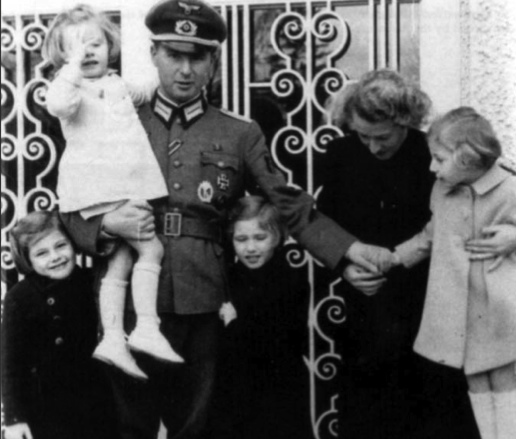

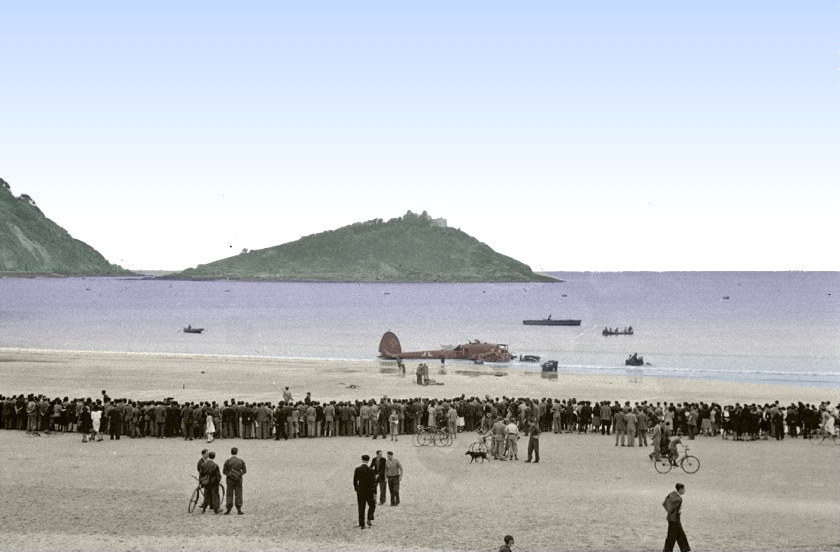


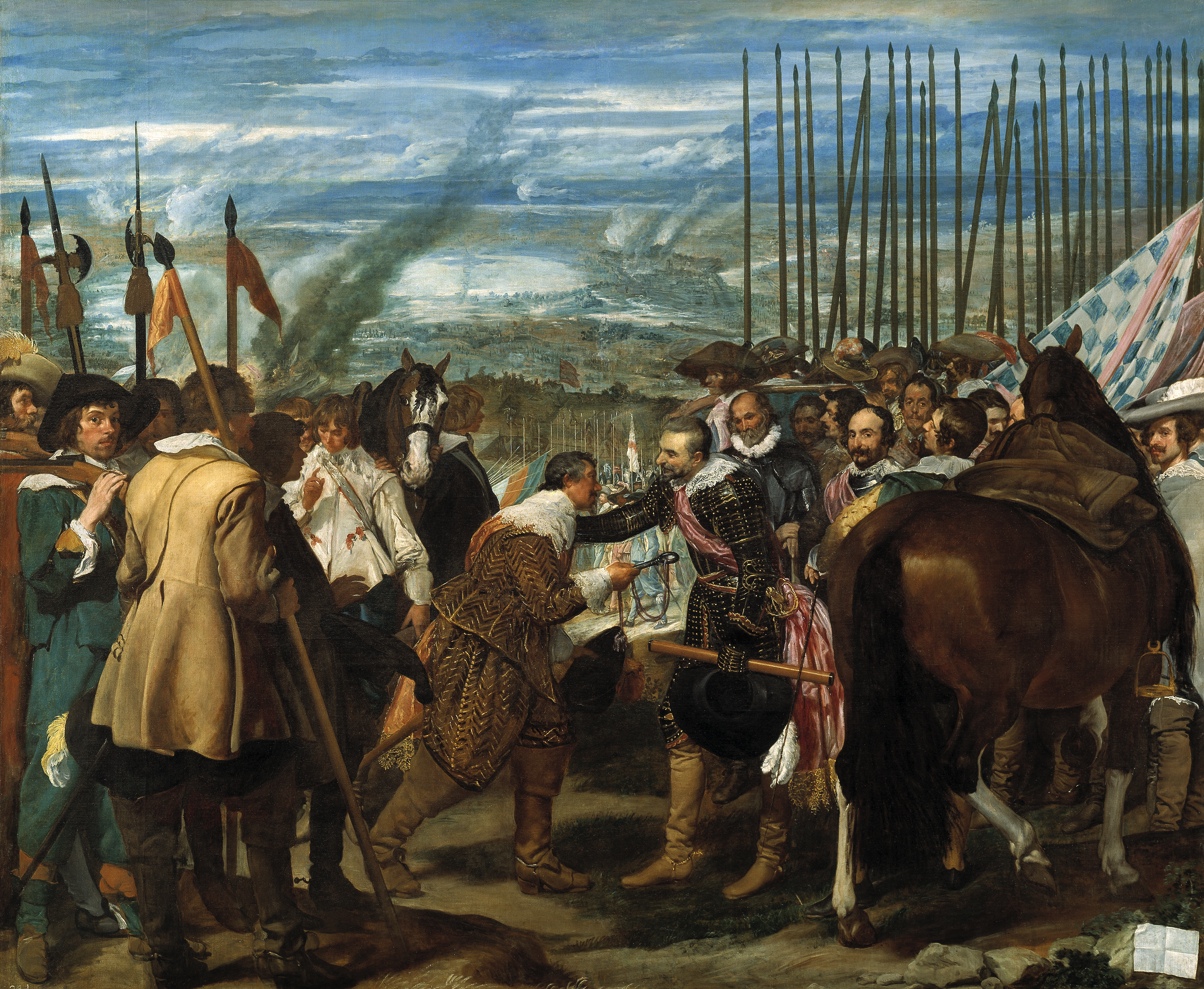

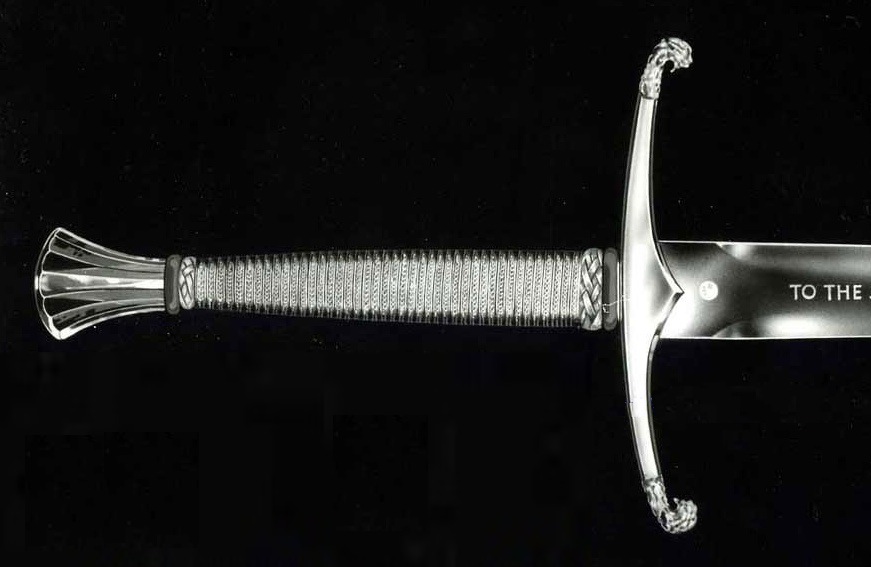
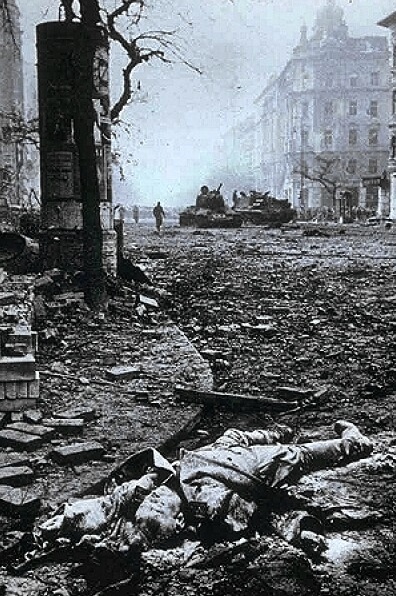
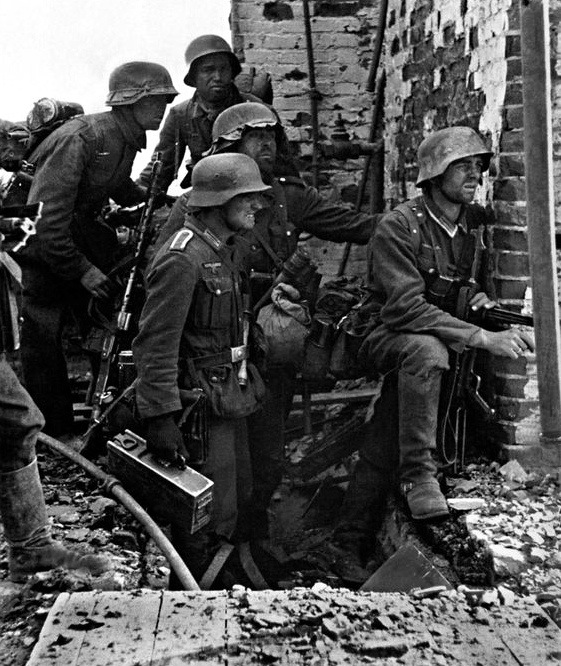


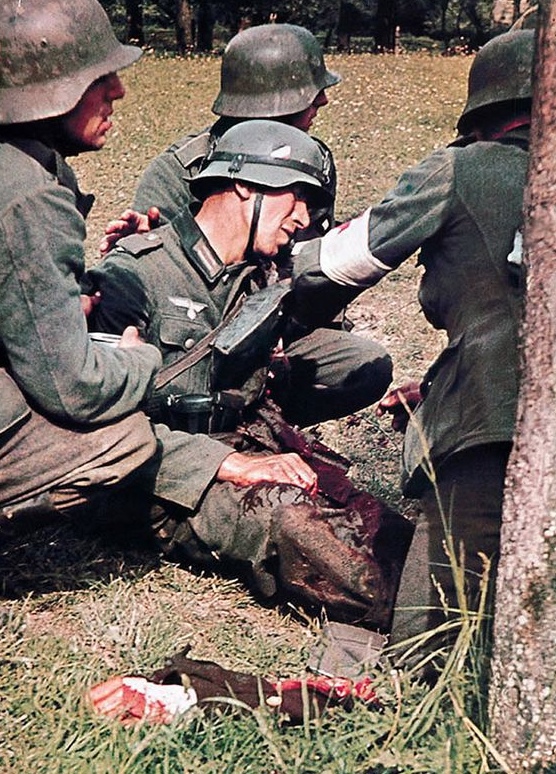

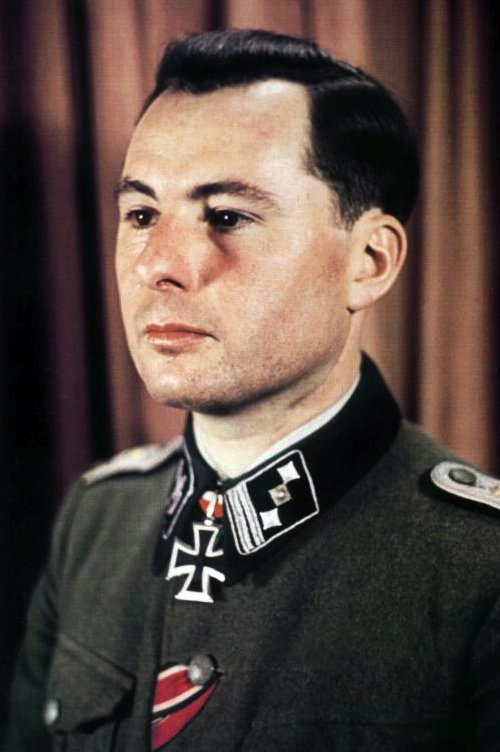

I can’t help but to think his facial features and in particular his nose are very Jewish. Since most top Nazis were Jews incl Hiller it would be somehow odd Leon Degrelle was anything but. He was a Nazi General and the Chief of Waffen-SS after all. Leon also means Lion.
As much as Waffen-SS was a top, awe-inspiring group (giving me goosebumps), composed of real but duped Germans and other European white men, I don’t think Rothschilds and the other assholes would allow a goy to lead them. However, it is possible he was a genuine and original goy sent on a suicidal mission just like all the other authentic Germans. Or, it is his story manufactured.
I’m not here to wind up anyone, but if we are ever as a White race to survive and come out the other end we must open our senses and wise up to the cunning plotters and their complex machinations. However much I would love to think he was a real goy, with honour and loyalty, there’s a possibility he was just another Jew installed and controlled by the international bankers.
I am proud and firmly rooted anti-semite and I admire the strength and intelligence of our people but we have one big weakness, that is, refusing to see and outwit the Jews who seem to be always one step ahead of us. Just to clarify, the Nazi ideology and its force were all too real inspired by the real people with beliefs and some understanding and Jew awareness, but nevertheless taken away, devised and directed by the AshkeNazis to their advantage and ultimately to crush the white man.
Pingback: Simon Harris – My Speech to the Patriotic Alternative Conference – Mar 16, 2020 — Transcript - katana17katana17